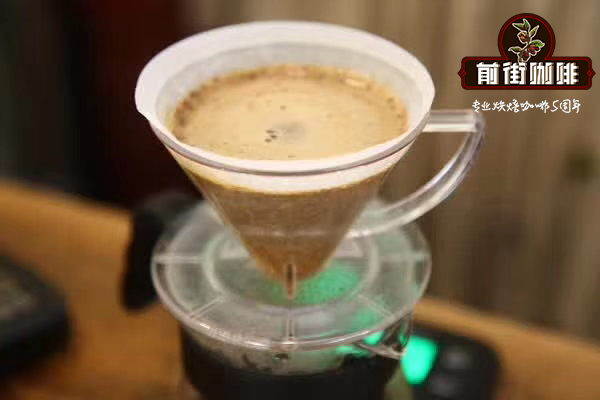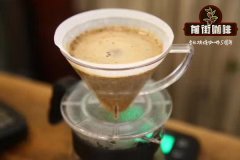The coffee in the dangerous place has the special flavor of the coffee bean.

Professional Coffee knowledge Exchange more information about coffee beans Please note the coffee workshop (Wechat account cafe_style)
Qianjie-dangerous ground La Antigua Flower God Water washing medium
Dangerously washed in Antigua Flower God
Region: Antigua Raminita
Altitude: 1850m
Varieties: bourbon, Kaddura, Kaduai
Processing: washing treatment
Regional referrals
Perilous Laura is located in Central America, where many volcanoes form high mountains and plateaus. It produces extremely hard coffee beans at high altitudes in Central America, and is the ninth largest coffee bean producer in the world. There are seven major producing areas such as Antigua, Huehuetenango, Atitlan, Coban, Fraijanes, Acatenango and so on. When the coffee beans produced in Lala, a dangerous area with seven major coffee producing areas, are all Arabica, they are all located on the highland topography under the tropical weather, with rich and stable rainfall and fertile volcanic ash soil, so that all parts of the country have natural environmental conditions for coffee cultivation.
Each region has a special taste, excellent sour and fruity taste, which is one of the best coffee in the world and suitable for individual use. The Antigua region is located in the whole region dominated by the Madre plateau in the opographically mountain crossing the dangerous land. Because of the natural conditions of the region, Antigua has become the most famous production area of the endangered region.
Introduction of Antigua production area
Huashen is a brand bean of La minita, the production area is located in the dangerous city of Antigua (Antigua), is a highland formed by active volcanoes, 1850 meters above sea level, is the largest and most famous producing area in China.
Antigua has little rainfall in summer and occasionally frosts because of cold in winter, which is not really suitable for the growth of coffee bars, but fortunately, it is located in an active volcano, and the volcanic rocks after the volcanoes are released fall into the soil after cooling. Because these stones have many holes, they are very easy to protect against moisture, and a large number of shelterbelts are planted in them, so that coffee bars will not suffer from cold damage in winter, which can overcome the bad conditions. Coupled with the great difference between day and night, Antigua forms a special micro-climate, making the coffee beans here have a faint smell and a thick fruity aroma.
Raminita is famous for her excellent planting, processing technology and excellent quality control. according to this standard, they commissioned the largest washing Las Pastores in Antigua to process raw beans, and named the coffee beans Hua Shen. in addition to retaining the original flavor of the region, the dry aroma has a strong aroma of flowers and tea, and after the entrance, the sour aroma and berry flavor are converted to the tail of honey. The excellent dryness and rich taste are the characteristics of this flower god.
Raminita residents do not use coffee, and because of the climate and altitude caused by the geographical environment of the mountain, the number of pests is limited by local conditions, and a small number of pests will not have a great impact on coffee coffee. At the beginning of the rainy season, the coffee fruit begins to ripen, and the color of the coffee begins to change, but the ripening of the coffee fruit is very slow and uneven, and it is not as rapid and consistent as flowering, so the harvest must be handled more carefully. only harvest the full-ripe fruit. The fruit produced by a tree will be harvested up to 5 times due to maturity. Soil tests are conducted twice a year to determine how to apply fertilizer. La Minita plants are very careful when using products that can increase yield, applying fertilizer at least three times a year.
In addition, the application of trace elements such as potassium, boron and potassium can provide more portions of coffee and prevent diseases. Such scientific cultivation and management has led to the appearance of the taste of Huasheng coffee and the reputation of the same taste in recent years. In accordance with La Minita's famous procedures, we strictly supervise the whole process of Huasheng coffee from planting to packaging. these tedious procedures are all to ensure that Pastores processing provides the best quality and strictly controls the standard operating procedures of the coffee. The Antigua region itself is the most famous of the seven dangerous areas, with high elevation, unique volcanic soil and shade planting, so the coffee beans in the Antigua region have a special flavor.
Processing method
1. Remove the floating beans and pour the coffee beans into a large tank, the undeveloped bad beans will surface, and the mature fruit will sink to the bottom of the water. At this time, the floating beans on the surface will be removed, that is, the steps of removing the floating beans will be completed.
two。 Remove the peel and pulp through the pulp remover, remove the real exocarp and pulp of the coffee fruit. It leaves fruit, endocarp and pericarp.
3. The purpose of this step is to remove the fruit by means of biological treatment. When the coffee fruit processed by the pulp remover is put into the fermentation tank for 1636 hours, the fermentation bacteria will dissolve the fruit.
4. After the completion of fermentation and removal of fruit, the coffee beans will be washed again because the bacteria and bacteria will remain on the coffee beans. In order to clean the dry water, this step will consume a lot of water.
5. Dry and remove endocarp and peel to dry the coffee fruit and reduce the moisture content to 100.14%. Then use the machine to remove the remaining inner fruit skin and peel, that is, to complete the processing.
END
Important Notice :
前街咖啡 FrontStreet Coffee has moved to new addredd:
FrontStreet Coffee Address: 315,Donghua East Road,GuangZhou
Tel:020 38364473
- Prev

WBC Coffee, Olive Coffee, Coffee Bean, Olive Coffee, Olive Coffee, Coffee, Olive, Coffee, Olive, Olive, O
Professional Coffee knowledge Exchange more Coffee Bean Information Please note Coffee Workshop (Wechat account cafe_style) Front Street-2017 WBC Champion Olive Coffee Coffee how does it taste like SL28 beans, a new product of the 2017 WBC peas? Let's get to know something about Finca Montes El Coro with Xiao Wei.
- Next

Costa Rican Stonehenge, Costa Rican Stonehenge, Black Honey Flavor
Professional Coffee knowledge Exchange more Coffee Bean Information Please note Coffee Workshop (Wechat account cafe_style) Front Street-Costa Rican Stonehenge introduction Costa Rican Stonehenge country: Costa Rican Boulder Grade: SHB processing: black Honey processing altitude: 1700-1800m elevation: 1700-1800m: Kaddura and Kaduai are located in Central America
Related
- Customers have "changed" Manner's new products! Shop assistant: Please don't mess around!
- Remove sockets in customer areas at Starbucks stores?! Netizen: I won't go if I really tear it down
- What is the difference between the taste steps of sun-dried coffee and washed coffee? Why is sun-cured coffee sweeter and washed coffee sour?
- The recipe for salty grapefruit dirty is revealed! Coffee Festival salty grapefruit dirty coffee making materials parameters ratio milk share!
- How about the flavor of Sunlight 74158 at Sidamo Banshaha Mathieu Processing Factory in Ethiopia? 74158 Share the proportion of coffee brewing parameters!
- What effect does Italian American coffee with filter paper have? Will coffee taste better if it is put on filter paper at the bottom of the powder bowl?
- What is the color difference in coffee beans? What are the characteristics of honey processed coffee beans? Why are the anaerobically treated coffee beans uneven in color?
- How does novice Xiaobai quickly get started and make coffee? Newbies learn to make coffee by hand and share the specific steps and process process!
- Costa tea has a shelf life of 100 years?! Expert: Unable to verify
- It's a huge uproar! American milk addition was rejected by Manner employees?!

